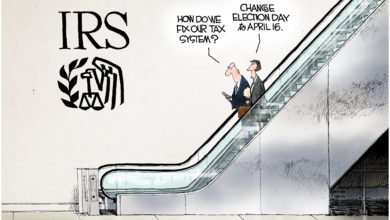Framing Narratives and Inducing Compliance Using Moral Foundations
If Americans could comprehend the amount of research that goes into media messaging, and how to frame an issue to affect attitude change, they would forever shut off their televisions. For the political elite, America’s culture of free choice presents a problem, one they see as standing in the way of their grand vision of Utopia. They cannot force their agenda without some smooth talking aimed at the moral base of dissenters if they expect them to change their political positions.
Even Biden’s recent tyrannical dictates, which many people accept as legitimate, demonstrate an understanding of political and moral framing of the issues. Millions across the country will accept his unconstitutional actions because of the effective methods used in presenting Covid-19 as a life-threatening pandemic. Research has shown in numerous instances, that framing an issue within the moral confines of a targeted audience is often enough to shift opinions and gain compliance with an action they may otherwise reject.
What is framing? According to the book Dynamics of Persuasion: Communications and Attitudes in the 21st Century, framing presents a relevant issue in a way that promotes the “problem definition, causal interpretation, moral evaluation and treatment recommendations” of a media message. Researchers have found that people are not necessarily the rational thinkers they are assumed to be. Framing issues from a particular viewpoint has shown that people are very susceptible to simple twists of words and reversing of logic. When facts are presented differently, it changes how people respond to them.
A common example is how the survival rates of a surgery may be framed. If a doctor explains a certain procedure has a ninety percent survival rate in one instance, and a ten percent fatality rate in the other, people respond to the ten percent fatality rate more, even though the information is the same. Cass Sunstein, Obama’s former regulatory czar, writes in his book Nudge that framing works because people are “mindless, passive decision makers.” He says people are not capable of thinking about how issues are framed, or if their opinions would change if they were presented differently.
This is important to understand because there is a massive academic effort underway which seeks to determine the best ways to shift political attitudes. Throughout the Covid-19 pandemic, the media framed the issue from the perspective that morality would dictate conformity with the measures taken to stop the spread. The media persuaded people into compliance through careful manipulation of the narrative based on what they know about the moral perspectives of the targeted population.
Persuasion in politics, according to the book, Political Persuasion and Attitude Change, is about the number of people that can be talked into changing their position to the other side, or nudged into complying with political objectives. Understanding the moral base of those seen in need of an attitude shift is essential to get naysayers to comply with government goals that go against their moral reasoning and political orientations.
The art of persuasion has been used extensively in pushing people to accept the absurd during the Covid-19 psyop. The technique of fear-then-relief suggests people ̶ after being exposed to a fear causing stimulus ̶ become mindlessly compliant once that stimulus has been removed and they become overwhelmed with the sensation of being relieved. This deceptive method of persuasion was applied by keeping the population in a sustained state of panic and offering the vaccine as the only viable way of returning to normal. This worked on a large portion of the population; however, the insatiable thirst of the tyrants won’t be satisfied until there is a needle in every arm.
Another method of persuasion that has proven effective in shifting political opinions is Moral Foundations Theory. This model of behavioral change suggests that people’s political and social attitudes can be changed by framing an issue within the political orientations ̶ or moral foundations ̶ of those deemed in need of an attitude adjustment. Before discussing what is believed about the moral foundations of the politically aware, it is important to understand the different types of people who are most susceptible to attitude change techniques.
According to an article entitled Persuasion, psychology and public choice, the moderately aware citizenry who believes they have a basic understanding of political processes is the most targeted for persuasive communication strategies. This is because those on the two extremes, the ones paying no attention at all to anything, and those deeply rooted in their political worldviews, are unlikely to need persuasion or shift their attitudes in any way.
(In the study of persuasion, it is a reoccurring theme that the social scientists conducting these studies believe most people are too stupid to do any research on their own.)
Using Moral Foundations Theory, the political elite and their media cohorts target those that are sitting on the sidelines with morally framed messages which fit in the parameters of their moral worldviews. In an article entitled Shifting Liberal and Conservative Attitudes Using Moral Foundations Theory, the authors discuss the methods used in framing political issues in a manner consistent with the moral values of liberals and conservatives. Like all studies in the social sciences, this one is rife with left-wing bias, particularly in how the morals of liberals and conservatives are described.
There is some truth to their assertions, however. For example, liberal morals are described as being concerned with fairness and not wanting to do harm to others, whereas conservative morals are equated to respect for authority, loyalty to group identity and purity of worldview. In most cases, liberals tend to show more loyalty to group identity than conservatives do but showing an ideological adherence to the liberty worldview is a right-wing trait to be sure. This is important because it is within this context that left-wing issues are framed to shift the opinions of conservatives to the left.
This study was broken down by examining how the framing of issues swayed the beliefs of participants ̶ if at all ̶ from their moral foundations. In some cases, if a conservative issue was framed in a conservative moral framework, the opinions of conservatives became more embedded. This is referred to as the entrenching hypothesis. In most cases the same was true for liberals. The persuasion hypotheses, however, yielded some interesting results.
When a left-wing issue was presented using an argument framed in the moral foundations assigned to conservatives, they were more likely to shift their opinions than liberals were. This is done from the “purity to worldview” morality assigned to the right. A New York Times article entitled The Key to Political Persuasion explained this using the issue of homosexual marriage. By framing the issue within the context of freedom and personal liberty, conservatives were brought to a point where they were willing to change their opinions.
By assigning moral values the way they have, they can also categorize conservatives as being uncompassionate for their unwillingness to shift their opinions on topics like gun control. In an article entitled I am an AR-15 Owner and I’ve had Enough, Daniel Hayes attempts to sway opinions by stating he had a moral reformation, and the liberty mindset associated with the second amendment needs to be set aside for the safety of our communities. This is the same argument being made with mandatory vaccinations.
As noted earlier, people with deeply rooted convictions who are actively engaged are generally not the targets of persuasive communications. Most patriotic Americans who understand the significance of the second amendment will not fall for this tactic. Many people who see gun ownership in terms of hunting and collecting, however, will. They are the target of such an article, and many of them can persuaded into changing their views on gun ownership. The more of them that comply, the easier it is to label those that don’t as uncaring extremists.
The general, overarching theme in the study of persuasion is that people are not aware of their own cognitive processes to think about what they are doing. The study Shifting Liberal and Conservative Attitudes Using Moral Foundations Theory also incorporated the Elaboration Likelihood Model of Persuasion. This model is working from the preconceived bias that people fall into two categories. Those who give a thoughtful analysis based on their own experiences, and the merits of the information before changing their position, and those who do not. This is known as taking the central or peripheral routes of persuasion.
The peripheral route suggests that attitude change can occur because people’s ability to process the information is low, and all it takes is a simple stimulus to produce the desired change in attitude. The central route is just the opposite and requires tweaking of the message to meet the moral base and political orientations of the target. According to the book Media Effects: Advances in Theory and Research, it is necessary to separate the public into those who may have a genuine interest in the message, and those who do not, when it comes to crafting the information meant to shift attitudes and change opinions.
The political elite have an objective that a large portion of the population object to. In our nation, the term “the consent of the governed,” holds a lot of meaning. They can not push their agenda on us without our willingness to comply. Countless hours of research have gone into the study of psychology and persuasion, with the goal of understanding what motivates individuals to change their political opinions. It is more than a simple assumption to say these techniques are being used to push attitudes to the left.
The authors of Shifting Liberal and Conservative Attitudes Using Moral Foundations Theory fully admit that the knowledge gained from their study would be useful in helping Democrats win elections. This shows the explicit bias in those conducting the study and what their aim is. Another aspect of their study showing their bias was the lack of an attempt to shift liberal opinions to the right by framing right-wing issues within the moral foundations of the left. They clearly have no interest in doing that as the left-wing world view is presented as the morally correct position.
The bigger point of this article is the importance of studying and researching the issues. The people conducting these studies believe most of the population is not able to do so. If Americans understood the depth of this research they would likely be infuriated.
Content syndicated from TheLibertyLoft.com with permission.





